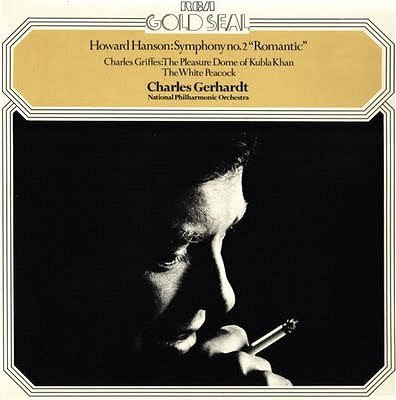What really matters is whether music moves the listener
At this festive time it is worth revisiting two Christmas oratorios that have featured here in past years. Last year I praised Paul Constantinescu's Byzantine Christmas oratorio 'The Nativity' for being "music that is neither easy nor difficult to listen to", while two years earlier I recommmended Pau Casal's oratorio El Pessebre (The Manger) as "a delightfully derivative concoction; just let's say that if you like Humperdinck's Hänsel und Gretel you will like El Pessebre." I make no claim that 'The Nativity' and El Pessebre are masterpieces. In fact I have developed a deep suspicion of the designation 'masterpiece', which no longer recognises intrinsic merit, but instead merely expresses establishment approval. It does not matter whether a work is a masterpiece or not. What really matters is whether it moves the listener. And, despite the received wisdom that creates gluts of Mahler, Britten, R. Strauss and, next year, Sibelius, different music moves different listeners. Which is why there is no such thing as a mass market for classical market, but rather a multiplicity of overlapping niches. And in the same way, different music moves the same person at different times and in different places, which is why my world and my music are never one and the same.
On An Overgrown Path is about music that moves me, not about approved or aspiring masterpieces. That is why the unfashionable music of Albéric Magnard, Edmund Rubbra, Elizabeth Maconchy, Malcolm Arnold, Wilhelm Stenhammar, Elisabeth Lutyens, and others has featured here. As Carl Nielsen demanded: "Give us something else, give us something new, indeed for Heaven's sake give us rather the bad, and let us feel that we are still alive, instead of constantly going around in deedless admiration for the conventional". So, at the time when the Christmas message is so important, I am sharing with readers a little-known symphony with an overtly spiritual message.
Virtuoso musician, author of the influential Mysticism of Sound and Music and founder of the International Sufi Movement Hazrat Inayat Khan has been mentioned here many times. His son Hidayat Inayat-Khan (b. 1917) studied at L'Ecole Normale de Musique in Paris where his composition teachers included Nadia Boulanger. Hidayat Inayat-Khan's music expresses the syncretic beliefs of the International Sufi Movement of which he is a senior member, and its tonal and programmatic idiom is very much out of fashion. But works such as the five movement 'Message Symphony' for orchestra and organ - which quotes from Le Sacre du Printemps in its third movement - are worth exploring. The episodic nature of the five movement 'Message Symphony' means it lacks the coherent structure of a classical symphony. But when viewed as five interlinked tone poems it can be seen - and heard - in a different light. For instance the fourth movement, which takes its title 'To soothe body, hear and soul' from a prayer used at the Sufi Universal Worship service that I attended recently in Holland and which inhabits the same sound world as Alan Hovhaness and Ferde Grofé, could successfully be programmed as a stand-alone work.
Hazrat Inayat Khan perpetuates a venerable musical tradition, as the Universal Sufi Movement is historically linked to Theosophy, a movement that has influenced many in the world of music, including Aino Sibelius (the composer's wife), Alexander Scriabin, Nicholas Roerich (who collaborated with Stravinsky on Le Sacre du Printemps), Ruth Crawford Seeger, Dane Rudhyar and - via Rudolf Steiner - Bruno Walter and Jonathan Harvey. The 'Message Symphony' is dedicated to spiritual liberty and was premiered in 1969 by the Munich Philharmonic. A privately released CD of a concert performance by the Netherlands Promenade Orchestra conducted by Jan Stulen is available from Sufi Movement's offices in The Hague, and the symphony can be heard in its entirety here. It is also available in another performance coupled with other works by Hidayat Inayat-Khan including his Gandhi Symphony from iTunes. All the scores of Hidayat Inayat-Khan's music, including his 'Message Symphony', can be downloaded from the composer's website. Many will dismiss this music with its overtly spiritual agenda as no more than an anachronistic curiosity. Which is not a problem, because, as I said earlier. different music moves different listeners. But before dismissing this music - or any music or any knowledge tradition - it is worth reflecting on this teaching by Hazrat Inayat Khan:
Spiritual attainment, from beginning to end, is unlearning what one has learnt. But how does one unlearn? What one has learnt is in oneself. One can do it by becoming wiser. The more wise one becomes, the more one is able to contradict one's own ideas. The less wisdom one has, the more one holds to one's own ideas. In the wisest person there is willingness to submit to others. And the most foolish person is always ready to stand firm to support his own ideas. The reason is that the wise person can easily give up his thought; the foolish holds on to it. That is why he does not become wise and progress, because he sticks to his own ideas
No review samples used in this post. Any copyrighted material is included as "fair use" for critical analysis only, and will be removed at the request of copyright owner(s). Also on Facebook and Twitter.











Comments